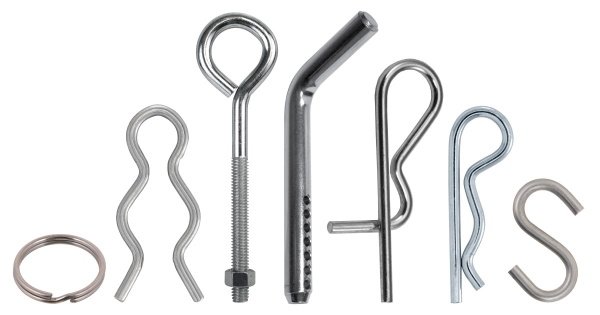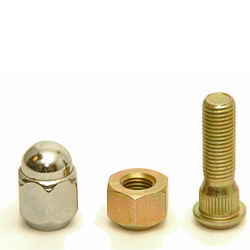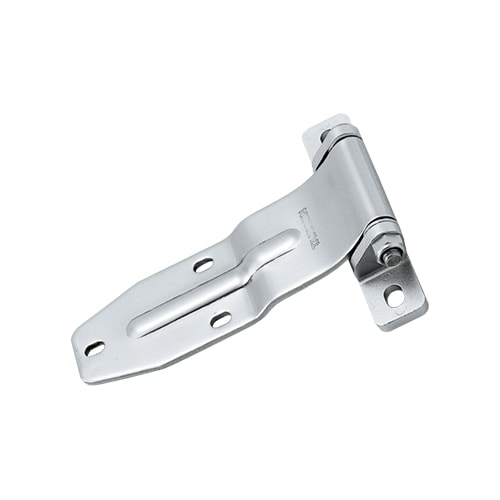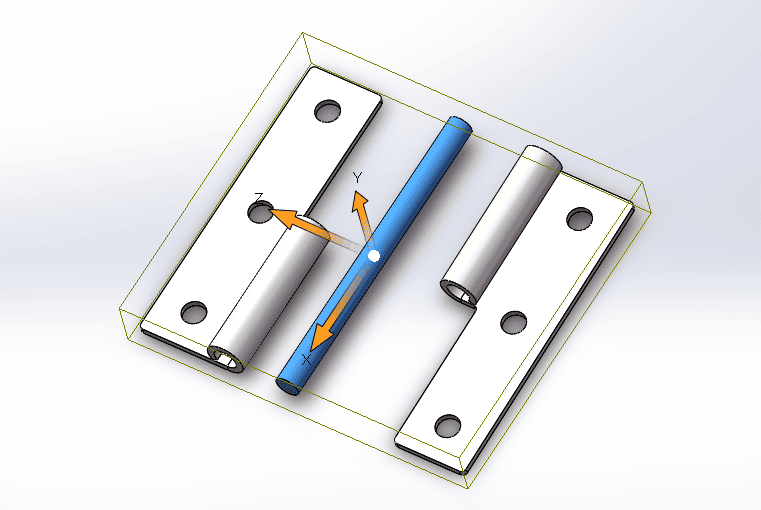
Wire forming is one of the most ancient manufacturing technologies. We have evidence of wire forming as far back as the Bronze Age when it was used to fashion elaborate gold jewelry. It developed through the Middle Ages and later became a key technology in the Industrial Revolution.
Wire forming fundamentals haven’t changed a great deal: wire is drawn to the required dimensions and then bent into a useful shape. But the tools, techniques, and materials have evolved enormously, particularly during the 20th Century.
An Introduction to Wire Forming
Wire forming is the process of shaping metal wire to make useful parts such as springs, fasteners, and retaining rings. Wire generally refers to flexible metal strands which can be coiled. While it often has a round cross‑section, wire may also be flat or shaped to have square, rectangular, or trapezoidal cross sections.
There is considerable ambiguity in the terminology around wire. The largest U.S. wire gauge is 0.50 inches or 12.7 mm, but round metal stock with larger diameters may also be referred to as wire. Round metal lengths with diameters between 10 mm and 100 mm are often called rods, and even larger pieces are called round bar stock. However, these distinctions are fairly arbitrary, and rod may be referred to as wire and subjected to wire forming processes.
Before wire is formed, it must be drawn through a die until it has the desired dimensions. A drawing die is a tool with a funnel‑shaped opening that gradually narrows. As the wire is pulled through, pressure from the die’s sides reduces its diameter. If too much force is used, the wire may break or stretch, so wires typically pass through many dies, gradually decreasing in diameter until the final specification is achieved.
Wire forming takes drawn wire, straightens it by passing it through a series of rollers, and uses tools to bend and shape it. A simple example is a bent pin. The wire is pulled over a tool that creates a bend of the desired angle before it is cut to the final length. With bent pins, the wire forming process may also use a die to punch or drill a hole in the wire and a cutting tool that chamfers the ends.
Metals used in wire forming include steel, stainless steel, aluminum, copper, nickel, and numerous alloys. These metals have different properties that influence the wire forming process and characteristics of the part.
- Carbon steel alloys
are widely used in wire forming for springs and high‑strength parts. Carbon steel is conductive, very strong, and inexpensive. The hardness and strength of carbon steel increase as more carbon is added — high carbon steel wire is often called music wire. However, higher carbon steels are more brittle and less flexible, making low carbon steel more appropriate for applications such as low‑stress springs. Carbon steel is also prone to rusting, so it is not suitable for parts intended for a moist environment.
- Stainless steel
includes quantities of chromium and other metals, making it more resistant to rusting than carbon steel.
- Copper
is strong and more flexible than steel. It is also an excellent conductor and has high thermal conductivity, making it ideal for electrical applications.
- Bronze
is corrosion‑resistant and an excellent conductor. It is often used in the manufacture of conductive springs.
- Aluminum
resists corrosion and is lighter and more flexible than steel, although not as strong.
- Nickel
is highly resistant to corrosion and is stable across a wide temperature range. The nickel alloys used in wire forming are non‑magnetic and poor electrical conductors, making nickel a suitable alternative to steel when non‑magnetic components are required.
Wire Forming Process
As you might expect, bending is the most common wire forming process. By bending a length of wire at various angles, it is possible to produce intricate three‑dimensional shapes. But wire forming employs several other processes in addition to bending. The wire is progressively exposed to a series of operations designed to efficiently produce the desired shape, features, and mechanical properties.
In the following, “axial direction” means in line with the wire’s length. Wire forming processes can apply forces in the axial direction, perpendicular to the axial direction, and at other angles, as required.
Upsetting:
deformation by compression in the axial direction to widen and shape the wire.
Extrusion:
shaping the wire by forcing it through an opening narrower than the wire’s diameter.
Swaging:
refers to two processes: firstly, pressing a die along the axial direction to shape the wire and, secondly, deformation of the wire by applying a tool at right angles to the axial direction, which is also referred to as side pressing.
Bending:
the process of introducing an angle into a straight wire. Bending can be done manually, but industrial wire forming often uses a stamping machine.
Stamping:
the wire is passed through a stamping press which uses forming tools called dies to bend and shape the part.
Twisting:
wires are twisted to combine multiple lengths, form specific shapes, or take advantage of springback forces.
Stretching:
lengthening and thinning the wire by applying opposing forces along the axial direction. Wire can only be uniformly elongated and narrowed by a small amount. Further stretching results in necking: elongation and thinning become focused at a single point, weakening and eventually breaking the wire.
In addition to these wire forming processes, manufacturers can use other processes such as roll forming, welding, knurling, chamfering, and weaving to create complex parts.
Types of Wire Form Manufacturing
Most wire forms are manufactured using a progression of the processes discussed in the previous section. But wire forming manufacturers have developed many different tools and techniques to increase manufacturing efficiency and the sophistication of wire form parts that can be made.
Manual wire forming is the most straightforward manufacturing process. Wires are bent and otherwise shaped by hand. At its simplest, manual wire forming doesn’t require tools, but production environments typically use hand levers and spindles on a geared bending machine powered by the operator.
Coil wire forming is used to make springs and electrical coils. The wire is wound around a metal blank and then cut. Coil wire forming can make several spring types, including torsional, extension, and compression springs. Coil forming is used to create standalone springs or components where the spring is one part of a more complex wire form.
Fourslide wire forming is a type of stamping that uses a stamping machine with multiple slides. It is called a “fourslide machine” because the primary bending operations are carried out by four slides arranged in a square, but the machines often have additional slides for cutting, feeding, and other operations. The slides are controlled by cams which influence their timing and motion. Each slide is equipped with a tool, and the part is progressively formed as they strike the wire in a predetermined pattern.
Fourslide machines became the most common high‑volume industrial wire forming machine in the 20th Century. They are versatile and can rapidly produce forms from wire stock as wide as 3 inches, although they are typically used with smaller wires.
One limitation of fourslide machines is that they are only suitable for large production runs. They require significant investment to set up cams and tools, making it uneconomical to produce parts in smaller quantities.
CNC wire forming machines are computer‑controlled wire bending tools capable of producing two- and three‑dimensional wire forms. As with other CNC machines, 3D designs are converted into a series of actions which the machine automatically carries out. Unlike fourslide machines, there’s no need to set up a system of cams and tools, making CNC wire forming machines more economical when creating custom wire forms.
Wire forming is a key manufacturing technology used to create parts for dozens of industries, including automotive, transport, electronics, appliance, HVAC, construction, medical, and aeronautics.
Huyett offers a comprehensive range of wire form fasteners and retaining parts, including:
- Cotter Pins and Split Pins
- Bridge Pins
- Grip Clips and
Self‑Locking Bridge Pins
- Hair Pin Clips
- D Rings and D Clips
- S Hooks and
V Hooks
- Heavy Duty
Split Retaining Rings and Keyrings
- C‑Form Rings
- Springs
View our full selection of fasteners and retaining hardware or contact our knowledgeable and friendly Sales team.





